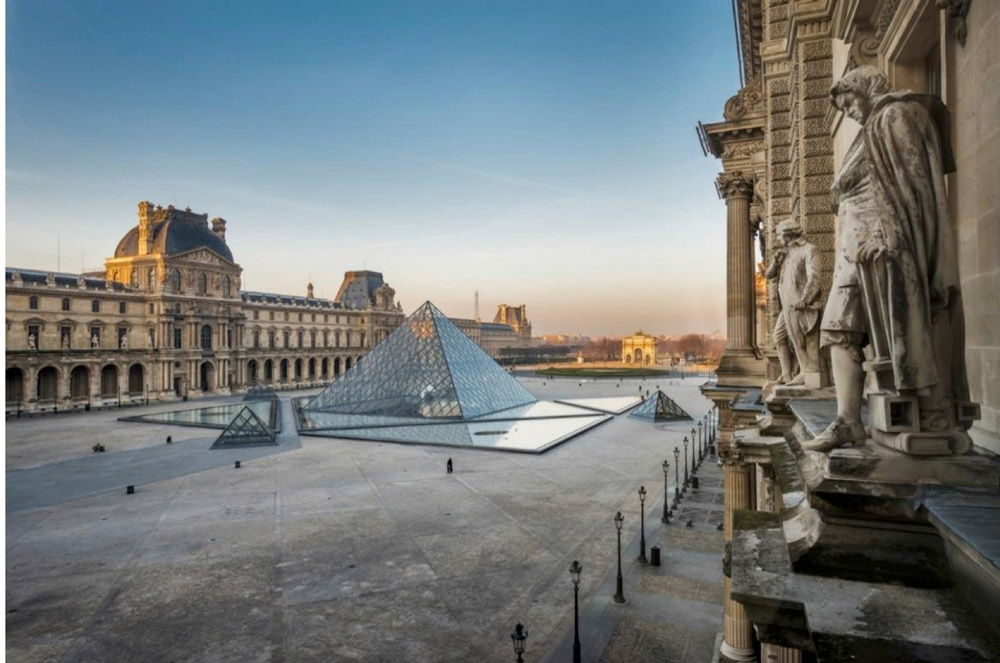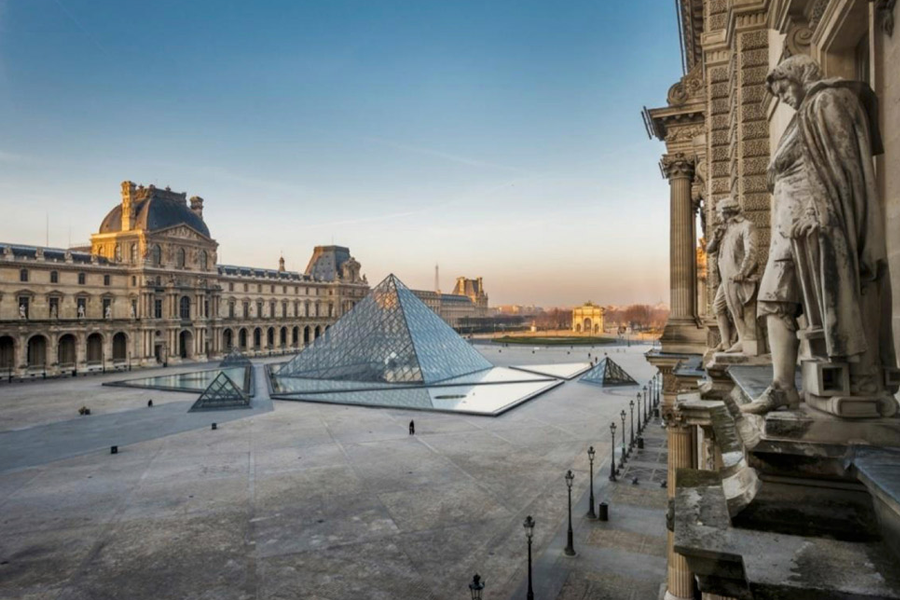From a digital transformation to local shopping to robotic logistics, luxury is going to see a world of change in this new year, thanks to the ongoing pandemic
The year 2020 was a rude awakening for global luxury, leading to a first ever negative growth in several decades. As per Bain & Co, the growth trajectory of personal luxury goods averaging at a CAGR of +6% through 1996-2019, was reversed to a -23% during the 2019-2020 period.

So what should luxury look up to in 2021?
When there is haze, things can get even more dangerous! As 2020 ended with a new strain of corona penetrating the world, crystal ball gazing is challenging. The disruptions caused by Covid continue to affect every aspect of our lives as we obsess over infection rates, social distancing, masks, quarantine, lockdowns and travel restrictions even while waiting for the promise of relief through vaccination. Covid has transformed the way we live, work, learn, buy, consume, play, pray, entertain, travel and connect with others.
The year 2021 brings along some recent lessons that luxury marketers shouldn’t miss. Here is what the world of luxury is likely to look like:
1. A digitally disrupted Luxury
The world of luxury has always been vary of the digital medium. The classic clash of ‘for the classes’ versus ‘for the masses’, made luxury remain at arm’s length with digital technology. However, the pandemic has changed it all. In today’s world, the entire business cycle is intercepted by digital interventions. Rapid digital strides across the entire length and breadth of the business model and quick adoption of the same by consumers has accelerated the process. From AI based style, trend & product forecasting to robotic manufacturing to merchandise planning to predictive sales and customer targeting, the entire process seems to be digitally intelligent.

The online auction “Bid for The Louvre”, by Christie’s, which offered exquisite products and phenomenal experiences, realised 2,365,000 Euros after 15 days of bidding in December 2020
2. The rich are super quick to the digital uptick
From hesitant acceptance to accelerated penetration, the Richie Rich have not only taken on, but are loving the digital mediums. They are well on-board, and now asking – “we are done with the digital transformation 1.0, so what’s next?” To answer this, brands need to pull up their socks to quickly take their customer experience strategies to the next level. It is believed that the 10 months of Covid have resulted in a tenfold increase of digital front end sales. Christie’s has reported an accelerated shift to online sales with a 41% increase in luxury lots sold in online auctions; 82% increase in the number of luxury online sales, and a 205% increase in the value of online luxury sales YoY.
3. Enhanced digital branding & engagement
As stores remained closed in many parts of the world, communicating digitally with customers became a norm. Further acceleration on digital investments with a focus on customer activation via video walk through, virtual sales and 3D store profiling became compulsory. Aside from enhancing just the websites, partnerships with reputable e-retailers is desirable. Digital marketing could help not only boost online sales but also entice consumers to visit stores once they reopen. The omni-channel approach by putting advanced technologies like Artificial Intelligence (AI), robotics, Internet of Things (IOT), and AR-VR into action, is expected to be one of the hottest trends in the coming year. It would not only enable retailers to offer the comfort of online shopping in bricks and mortar shops, but also it would introduce the lively experience of offline shopping through the world of e-commerce. However, training your teams and staff on new digital technologies is a must to ensure complete protection of your brand.

Watchmaker IWC Schaffhausen launched its virtual boutique experience in Middle East in September 2020
4. Rise of the Robots
Covid-19 triggered new concerns about physical contact in industries like retail, hospitality or warehousing, where social distancing is almost impractical. Robots seemed to be the easier solution. Research suggests that automation often gains ground during a recession. In the pandemic, companies accelerated work on machines that can check guests into hotels, cut salads at restaurants, or collect fees at toll booths. It seems human touch is the new luxury. High end customers seem to want a combination of automation for efficiency and human connect for the last mile emotional appeal. More and more brands are adopting to such hybrid technological support. Luxury realizes that technology alone is not enough – it needs to be suitably blended with emotional intelligence and empathy for a complete and unforgettable customer experience. Education and training in new technologies is hence a must.
5. Silent luxury over bling
“Silent luxury” which pays more attention to classic elements, such as craftsmanship and heritage will be in vogue. The pandemic has taken a heavy emotional toll on people’s mind, thereby impacting their behaviour, reasoning and need for simplicity. Being subtle and less conspicuous to a point of completely avoiding “bling” is perhaps the way forward.

Fendi’s Spring Summer 2021 collection is a nostalgic trip down the memory lane, focusing on classics, well-crafted, simpler creations
6. Transactional sales to relationship oriented sales
The purpose of luxury has more often than not been to provide the feel good factor. Historically speaking, post any kind of an economic crisis, there has been an increased demand for products that bring in the feel good factor. Hence, post the vaccine, luxury can anticipate a surge of first time shoppers over seasoned luxury shoppers. It is always more difficult to forge a relationship with new customers, that too newly recruited ones. Hence with superior customer service, focus on brand storytelling and adequate training of front end staff, brands will have an opportunity to turn transactional customers into long lasting luxury shoppers.
7. Home is where the heart is
With the pandemic locking customers into their homes, newer categories of luxury have come centre stage. New re-invented hobbies for music, cooking, home work out, video meetings and self-dependence has necessitated a pull towards making home a safe, comfortable and fully equipped haven. Work from home demands a technology laden work station, a fully loaded kitchen and a safe, healthy and peaceful environment. Non-urban, country side homes with all facilities seem to find favour and remain in demand. Leisure wear, casual clothing, home work out equipment and home technology products will continue to see an uptick.

A home office design by interior designer Aparna Kaushik
8. Hybrid fashion and trade shows
At the peak of the pandemic, most luxury fashion and trade shows went on line with virtual fashion shows. Some also went season less with just one collection for the year. In India, top notch designers put up digital shows at a much more efficient cost. However, luxury brands like Etro, and even Paris Fashion Week soon resorted back to physical shows for SS 21 and brought back the element of glamour, hedonism and physical energy. The future will perhaps be a combination of the two formats where a selected few will now be invited for the physical show whilst the others access the same through live transmissions.
9. Luxury shopping is local
A typical luxury customer has been shopping during his global travels during business and holiday trips. Attraction of a larger selection, better pricing, tax free havens or simply the ‘mood’ were all reasons favourable for this trend. However, with travel restrictions not going away soon enough, more and more shoppers will continue to buy luxury closer to home. This, of course, has a beneficial impact on local stores where travellers locked in to their own countries continue to find solace with brands and stores closer to them. A great opportunity for luxury brands to hook them on with excellent customer service and personalised relation building.
10. Purpose will precede brand
As the world emerges from the pandemic, a permanent shift towards ‘purpose’ and ‘brand values’ will remain central to purchase decision. The young, the restless, the I-generation do not just want to buy more buy cheap, but buy less and buy good. The purpose of the brand, its contribution towards mankind & social issues, inclusivity, environment and nature play centre stage. This shift to value-based consumers can be daunting for brands with outdated business models, or having a bad reputation. However, going forward, a brand that operates with heightened value and transparency, sincerity and commitment is most likely to be rewarded with lasting customer loyalty and trust. Ethics, sustainability & transparency move into the design room from being just another marketing buzz words. Luxury moves from being conspicuous to being conscious and sustainable.

Serapian, a 90 year old brand, released its first sustainable capsule collection, made from grapes leftover in the winemaking process, in July 2020
11. From ownership to experience and back again
Some kinds of travel came to a near halt. Global tourism fell 72% in the year through October, according to the United Nations. Business trips could disappear forever as meetings move online. With vacations upended and mass events like festivals and concerts called off, the trend among consumers to favour “experiences” over goods has been disrupted. And going forward, when activities do resume, they may not be the same. In the past few years, the luxury consumer across generations had begun to prefer ‘experiences’ over ‘products’. However, the pandemic seems to be reversing the trend once again towards more classic, more expensive, more carry on iconic products over experiences. The value proposition of instagrammable products over high end hotels, resorts, cruises and restaurants seems to be switching back.
12. Micro vacations are here to stay
Long stay vacations came to a near halt during 2020. Weekend getaway, motor-able destinations, boutique properties with special personalised experiences came into demand. With fear of long distance travel to unknown destinations continuing to remain strong, micro vacations with close family and friends to smaller boutique properties in easy-to-reach destinations will remain in flavour. An upsurge in such demands will remain strong and persistent.
*Compiled with Inputs from reports by McKinsey, Bain & Co and various articles over the public domain.
 Abhay Gupta, a certified Marshall Goldsmith coach, is the founder, promoter and CEO of Luxury Connect (a boutique consulting organization) and Luxury Connect Business School (LCBS). Author of The Incredible Indian Luxury Bazaar, he has helped establish luxury brands like Versace, Versace Home, Versace Collection, Corneliani, Arredo Classic, etc in India. Luxury publication Blackbook recognizes him as one of the ‘Top 100 Indian Luxury’s Most Influential’ for the past 6 years. He is also a recipient of the ‘Luxury Retail Icon 2012’ title by Asia Retail Congress. Having being featured in Forbes Luxury Trend Report 2012 as one of the industry leaders, he has also been widely recognized as a luxury expert by many media organisations. Fondazione Altagama has also recognized his contribution to the growth of Italian luxury industry by his pioneering efforts in India.
Abhay Gupta, a certified Marshall Goldsmith coach, is the founder, promoter and CEO of Luxury Connect (a boutique consulting organization) and Luxury Connect Business School (LCBS). Author of The Incredible Indian Luxury Bazaar, he has helped establish luxury brands like Versace, Versace Home, Versace Collection, Corneliani, Arredo Classic, etc in India. Luxury publication Blackbook recognizes him as one of the ‘Top 100 Indian Luxury’s Most Influential’ for the past 6 years. He is also a recipient of the ‘Luxury Retail Icon 2012’ title by Asia Retail Congress. Having being featured in Forbes Luxury Trend Report 2012 as one of the industry leaders, he has also been widely recognized as a luxury expert by many media organisations. Fondazione Altagama has also recognized his contribution to the growth of Italian luxury industry by his pioneering efforts in India.

